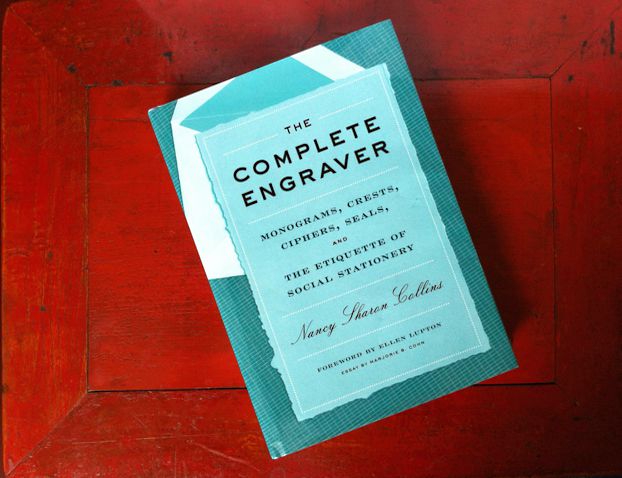“Jean Cocteau once said that poets unravel their handwriting and then tie it up again, but differently. This is what Nancy Sharon Collins teaches us about the extraordinary art of engraving, making us see that words are like ribbons: at once intentional and lyrical, they magnificently gesture to the nuances of human, social interaction in a world overrun by the dreary monotony of text. If typography has a poet laureate, Collins may well be it.” —Jessica Helfand, Co-Founder and Partner, Design Observer
The original, Princeton Architectural Press publication has sold out. However, The Complete Engraver is now available on Kindle. Additionally, Mrs. Collins has collected a number of out-of-print copies and will be selling them on an individual basis. Please stay tuned for more buying options on the gorgeous, hard cover version!
About The Complete Engraver:
In this age of emails, texts, and instant messages, receiving a letter has become a rare treat.
Engraved stationery can make a piece of correspondence, whether a short note, formal letter, or business card, even more special. Once an integral part of social life, the use of engraved stationery has become a lost art. Stationer extraordinaire, and author, Nancy Sharon Collins brings this venerable craft to life. From the history and etiquette of engraved social stationery in America to its revival and promise of new visual possibilities. Illustrated with fascinating, original specimens of social stationery, calling cards, and monograms, The Complete Engraver also includes instructional sections that give tips on letter writing, social stationery etiquette, and the steps required to commission engraving work today. Two digital fonts based on engraver’s style typefaces are available free for readers of the book.
Note: The little “IDEA”, seen to the right of the large 1859 steel engraving by D. J. Pound, is an example of the 1/2″ thick steel dies described by Mrs. Collins in her book. Engraving for stationery has to be backwards so that the print made from it will be “right reading” (an old graphic arts term for reading the right way.)
